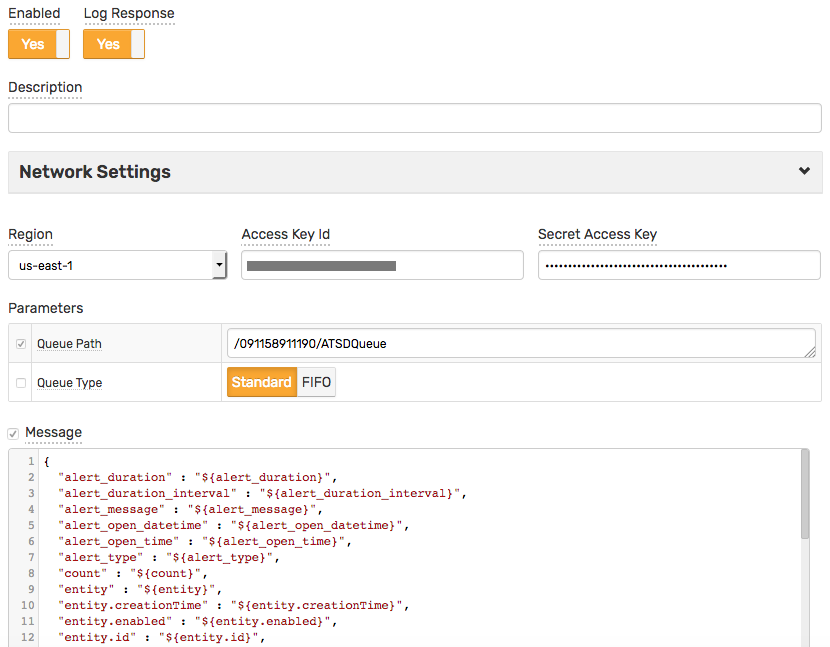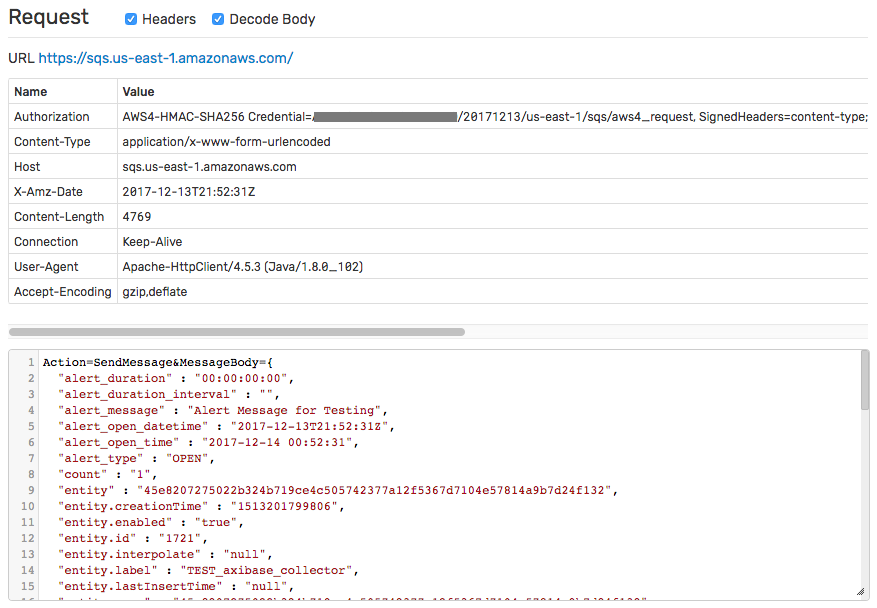Amazon SQS Webhook
Overview
AWS SQS webhook sends messages to an Amazon SQS queue upon window status events.
Webhook Settings
| Setting | Description |
|---|---|
| Region | The Amazon SQS Region. |
| Access Key Id | Access Key Id |
| Secret Access Key | Secret Access Key |
| Queue Path | The path of the receiving queue. |
| Queue Type | The type of the receiving queue. |
| Message Group Id | Optional tag that associates the messages with a specific message group. |
| Message | Default message text. |
Queue Types
| Setting | Description |
|---|---|
Standard | The Standard queue offers maximum throughput, best-effort ordering, and at-least-once delivery. |
FIFO | The FIFO (first-in-first-out) queue guarantees that messages are processed exactly once, in the order that they are received, with reduced throughput. |
Message
Each window status event can produce only one AWS SQS message.
The message is submitted to the specified AWS SQS endpoint using the POST method with application/x-www-form-urlencoded content type. The request includes additional AWS headers (Authorization, X-Amz-Date) and is signed with AWS Signature Version 4.
The default message template uses the JSON format and includes all fields, including entity and metric metadata.
Response
The response status code and response content is recorded in atsd.log if the Log Response setting is enabled.
Configure AWS SQS Webhook
Open the Alerts > Outgoing Webhooks page.
Click Create and select the
AWS-SQStype.Fill out the Name, Region, Access Key Id, and Secret Access Key fields.
Enter the Queue Path.

Click Test.


If tests are passing OK, check Enable, click Save.
To test the actual payload, create a sample rule, and enable the AWS-SQS webhook on the Webhooks tab.
